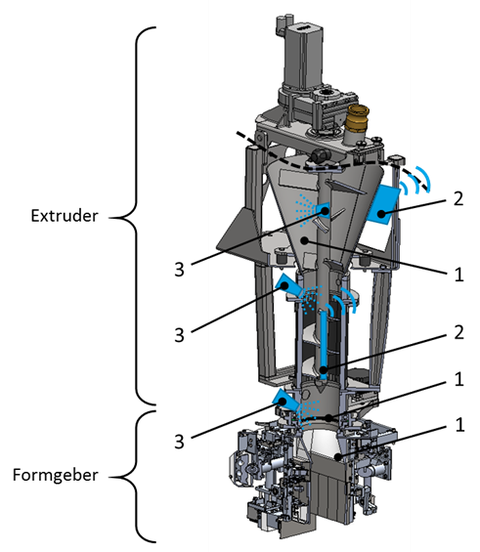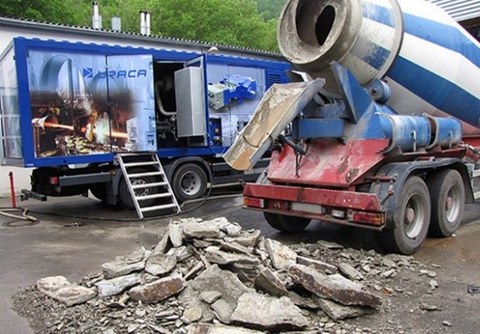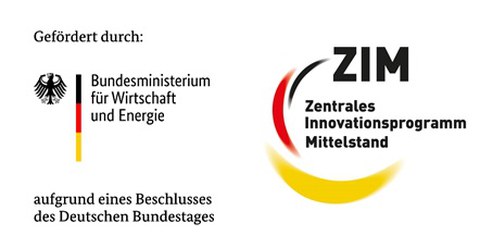ConCIP
Development of a cleaning-in-place process for cleaning a print head for the additive manufacturing of cementitious materials
| Funding: | Central Innovation Program for SMEs (ZIM) |
| Funding code: | KK5023218HD3 |
| Partner: |
ECT Kema GmbH |
| Duration: | 06/2024 - 05/2026 |
| Contact: | Paul Plaschnik |
Numerous research institutions and companies around the world are researching innovative additive construction methods for the future, such as concrete 3D printing. With the ConPrint3D® technology (3D printing of cement-bound materials) from TU Dresden, standard architectural and construction elements can be produced on the construction site in the shortest possible time with standardised concrete, formwork-free and fully automated. This is done using commercially available machines that are adapted to the requirements of the new work process. During the development of the concrete 3D printing process, it became clear that the cleanliness of the process equipment when processing concrete has a decisive influence on process reliability and the achievable quality. As the quality requirements for products and the degree of automation are constantly increasing, even in conventional processes in the concrete processing industry, inadequate cleanliness levels of the process equipment are increasingly jeopardising the achievable process quality across the industry. Due to the specific hardening properties of concrete, large quantities of particularly difficult-to-remove contamination often occur on concrete-carrying components of construction machinery. These residues account for two to three per cent of the volume of ready-mixed concrete produced worldwide. Automated inline cleaning systems could provide a remedy, but do not yet exist for concrete 3D printing technology.
The R&D project ConCIP aims to simplify the time-consuming and resource-intensive cleaning process of a concrete 3D printing system by developing an inline process. For this purpose, an adaptive cleaning process is being developed that relieves the operator of the system and reduces the cleaning time of the system. Firstly, the system's contamination potential is reduced by passive measures and an active anti-adhesion system, before a semi-automated active cleaning process or an integrated cleaning system removes any remaining concrete residue from the print head.



